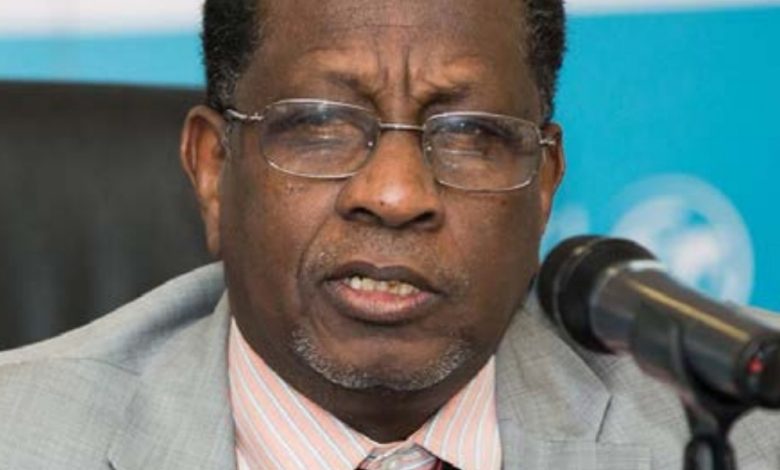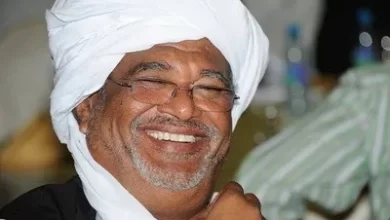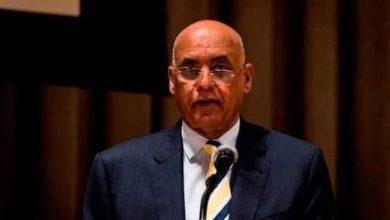Tribal Identities in Sudan: A Return to the Roots or a Leap into Darkness (3/3)

Al-Tijani Abdel Qader
Ibn Khaldun observed long ago that Arab Bedouin tribes do not attain kingship “except through a religious coloring of prophecy, sainthood, or some great effect of religion.” (4) This observation is useful in this context, as the tribe in northern Sudan could not have become a framework for identity and a reference point for social cohesion and solidarity without its association (whether real or imagined) with a lineage of righteous ancestors or sheikhs—righteousness invariably linked to religious symbolism. Furthermore, the elites who ascend to leadership cannot easily lead unless they possess some form of charisma rooted in that symbolism. This means that the blood bond alone is not enough to create internal cohesion within the tribe; it requires a myth, religious symbolism, or a Sufi order to serve as an ideology. Thus, in the Sudanese experience, it became common to see the “ruling family” of the tribe striving to connect with and associate closely with the sheikhs of Sufi orders to enhance their moral legitimacy among their subjects and link their inherited privileges to an ideological superstructure.
However, the tribal sheikh (or ruling family) cannot maintain his leadership status through religious symbolism alone. He also needs continuous economic resources, as it is expected of him, in addition to his duties in resolving disputes and protecting the tribe, to be generous and willing to spend lavishly. This means that, in all cases, he must have considerable wealth to face the challenges posed by his rivals, the expectations of his followers, and the pressures from the central government. Tribal sheikhs, since the Funj Sultanate era, would turn to influential caravan traders just as they turned to Sufi leaders. These three groups—the tribal leader, the trader, and the Sufi leader—earned widespread acceptance from the rest of society and came to dominate the political system.
When foreign rule was imposed on Sudan (first by the Turks and then by the British), this triad’s influence weakened somewhat as law and order were entrusted to regular armies, and large administrative bureaucracies emerged. Trade and the economy became the primary focus of the government. Despite this, the alliance between the merchant, tribal leader, and Sufi leader only grew stronger, to the point that even the foreign government itself began to seek their services as mediators and to secure the loyalty of citizens. The government bestowed the title of “notables” upon them. The Turkish government also created the position of “Sheikh of Sheikhs,” granting its holder authority over all other sheikhs. When this position was abolished in 1860, it was replaced by the role of “Nazar,” restricted to specific areas. Since then, tribal leadership became a sophisticated political craft that involved building strong relationships with Sufi sheikhs and the central government, bringing to the surface once again a triangular collaboration between the tribal leader, the Sufi leader, and the central government.
This collaboration grew, and with it emerged a unique ideology embodied in the integration of Sufi orders into tribes (such as the integration of the Khatmiyya order into the Shaiqiya and Hadandawa tribes, the Sammaniyya order into the Gumaa and Jumu‘iyya tribes, and the Mahdist order into the Ta’aisha, Rizayqat, Misseriya, and Hamar tribes, among others). Religious symbols and historical glories were invoked to justify the leader’s authority and consolidate his power. Exploitation in this relationship—between leader and follower—is possible but not inevitable, especially in the era of information explosion and mass communication, where no sheikh can monopolize knowledge or control the discourse as was previously the case.
As for the current situation, particularly with the new revolutionary leaders in western and eastern Sudan, it’s noticeable that they have distanced themselves “apparently” from their former “internationalist” organizations and are now seeking to become “sheikhs.” How did they reach leadership positions in their local communities? The answer can be summarized in one word: “war.” The prolonged war between the central government and peripheral regions, along with the resulting human suffering and the destruction of social and economic structures, created these revolutionary leaders, who willingly or unwillingly became immersed in the revolutionary reality provided by guerrilla warfare, embracing the new culture it generates.
However, guerrilla warfare has its requirements and goals: it seeks, in its philosophical foundation, to dismantle the old social contract and break down the old tribal and ideological structures, allowing the revolutionaries to forge a new social contract, manufacture an alternative identity, and assemble inspiring revolutionary symbols (along the lines of Mao Zedong, Ho Chi Minh, Che Guevara, and Castro). This means that these leaders face three simultaneous battles: a military battle against the center, an ideological battle to build a new ideology, and a battle with local society, aimed at dismantling its cultural and social structure and reshaping it to create the “complete revolutionary human,” who will lead others toward a “new Sudan”! Entering these deep battles, such as crafting an ideology for the revolution and producing leadership with vision, capacity, and charisma, represents a journey into the unknown and a pursuit of the impossible. Without that, it will be difficult to distinguish between true revolutionaries, rebellious movements, and armed looters. This is the gloomy dilemma that has caused these revolutionary leaders to split into two camps: a “realistic” faction and a “romantic” one.
The romantic faction aspires toward a comprehensive secularism for the state and society, seeking a complete break with the Arab-Islamic identity. They aim to establish the foundations of what they believe Sudan should be (according to the Declaration of Principles of March 2021, signed by “Al-Hilu” and Burhan) and hope for support from neighboring countries and the international community. The other faction is more politically pragmatic, seeking a gradual shift from “destructive revolution” to construction and reform, from breaking with tradition to reconciling with it, and from central hegemony to strengthening the periphery.
The writer of these lines has not had the opportunity for an intellectual dialogue with these new leaders, but my follow-up to their recent stances and listening to some of their public statements makes me believe that the pragmatic faction has learned some lessons from the long war they fought. Among these lessons: reconciliation is better, rebuilding and developing local communities is preferable to dismantling them, and those who aspire to genuine leadership of rural areas must reconcile with their local identities and work to reform them. This faction must have also realized that the “central authority” is inevitably fading and that the center can no longer monopolize discourse, as modern media allows everyone to be heard, to gather their forces, and to implement their projects without passing through or seeking permission from central institutions. They have realized that real power exists at the bottom of the pyramid, not its top. A quick glance at the Juba Agreement signed between the government and the transitional government in October 2020 may suffice to demonstrate this belief. The dominant terms are: restoration, acknowledgment, recognition, and review.
For instance, the negotiators agreed on: “restoring the regional governance system,” “recognizing the role of traditional administration,” and “acknowledging traditional rights to tribal land ownership.” The regional governments were given the right to review contracts related to natural resources extracted from their lands, issue licenses for exploration and extraction, negotiate contracts and revenue-sharing agreements with investing companies, and revoke licenses. This means a new strategic vision of “land” is beginning to take shape: rather than being just a battlefield, it will become a field of oil and a mine of gold. Whoever controls it will claim the largest share of power and gain popular acceptance by distributing services and benefits to localities, attracting tribal sheikhs, religious figures, and influential central figures. This is a method by which members of certain clans in many African and neighboring Arab countries have become leaders and eventually heads of state.



